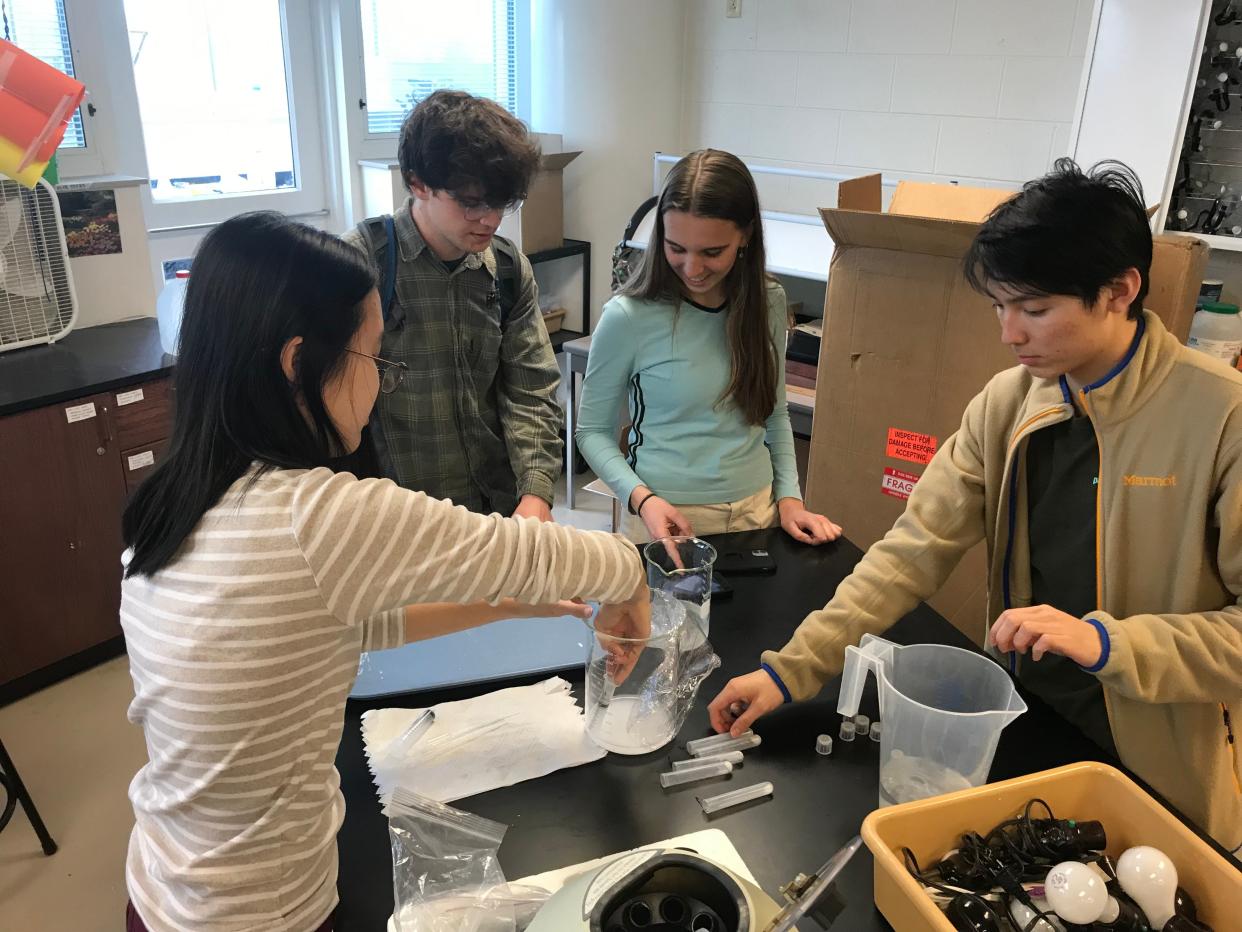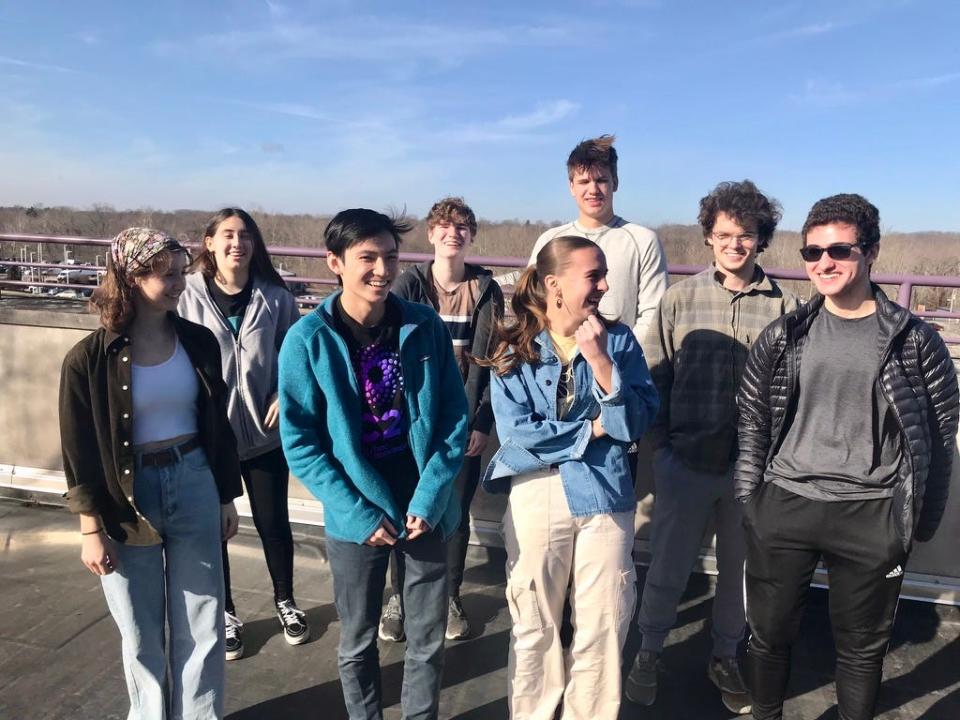Bloomington South team creates new heat-reflecting white paint

When it comes to scientific breakthroughs, stirring up some white paint may not sound like “stop-the-presses.”
But three students at Bloomington High School South will be travelling to Washington, D.C., on May 15 to be recognized for doing just that.
Working in the lab at South, the students have produced a new form of white paint that reflects the heat of the sun better than ordinary, hardware-store white paint.
They call it “heat-reflecting barium sulfate,” and according to their measurements, it cools 6 degrees Fahrenheit better than commercial white paint, meaning less heat is absorbed and more is reflected.
Team member Ethan Kiang says that means fewer “urban heat islands.”
You can see how the BHS team perfected heat-reflecting barium sulfate by visiting samsung.com/us/solvefortomorrow.

The other seniors making the trip to D.C. are team-members Emma Shaw and Rebekah Mou, and they’ll be accompanied by their teacher, Kirstin Milks.
“These are passionate, inquisitive, problem-solving young people,” Milks said. “I'm so excited to chaperone this adventure for them and excited their work has already made it to a national audience.”
The Bloomington trio will make their pitch to Samsung Electronics America, sponsor of the national competition. They’ll compete against 10 other national finalists selected by Samsung. Each finalist already has earned a prize package valued by Samsung at $50,000.
And three of the 10 finalists who are chosen in Washington as national winners will take home an additional $100,000 in tech gear and supplies, according to Samsung.
Submissions from the other nine national finalists include, for example:
Greenbrier East High School, Lewisburg, West Virginia — A mining sensor to help find and rescue lost cavers.
Strawberry Crest High School, Dover, Florida — A body-heat sensor worn by athletes and monitored by coaches to prevent heat-related death.
Liberty Avenue Middle School, Brooklyn, New York — “Subsave,” a device for subway riders to discreetly report emergencies to police or mental health responders.
Besides the Washington competition for national winners, Samsung has invited the general public to view and select a “Community Choice Winner” at the website samsung.com/us/solvefortomorrow.
This article originally appeared on The Herald-Times: Bloomington South team finalists in Samsung science competition

